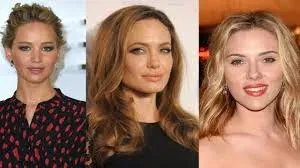Explore how women’s roles in movies have evolved, the stats behind the screen, and what’s next for female representation in film.
Women’s representation in movies has always mirrored society’s views — and often, its prejudices. From silent-era damsels to today’s complex leads, female characters have come a long way, but the journey isn’t over.
1950s–1990s: Beauty, Romance, and the Male Gaze
For much of the 20th century, women in films were boxed into roles like housewives, love interests, and femmes fatales. Think Audrey Hepburn in Breakfast at Tiffany’s or Sharon Stone in Basic Instinct. Rarely did women lead the plot — they were part of someone else's.
Directors and screenwriters — almost all male — shaped female characters through a narrow lens. Few female filmmakers existed in the studio system, and the few who did (like Ida Lupino) were largely ignored.
2000s: The Rise of “Strong Female Leads”
By the early 2000s, audiences started demanding more from female characters. The “strong female lead” trope — seen in Katniss Everdeen (The Hunger Games) and Lisbeth Salander (The Girl with the Dragon Tattoo) — became popular. These characters fought, led, and survived — but often without depth or emotional nuance.
Still, it was progress. Women were finally being placed at the centre of blockbusters. But the industry still lacked female screenwriters, producers, and executives — which meant stories were told through a male framework.
Now: Diverse, Complicated, Real
Today, things are shifting. Films like Barbie (2023), Everything Everywhere All at Once (2022), and Promising Young Woman (2020) show that female-led films can dominate box offices and win awards — while challenging gender norms.
Modern audiences want authenticity. Women are tired of being background characters. And female filmmakers are finally being given the space to tell their own stories — stories with cultural depth, trauma, joy, and identity.
What the Data Tells Us
- Only 35% of the top 100 grossing films in 2023 had female leads.
- Just 14% of major film directors last year were women.
- Films with female writers had more balanced gender representation on-screen.
- Barbie grossed $1.4 billion and became the highest-grossing film of 2023 — led by Greta Gerwig.
- Only 2 women of colour have ever been Oscar-nominated for Best Director.
Why Representation Still Falls Short
Even now, most female characters are white, straight, and able-bodied. LGBTQ+ women, disabled women, and women of colour are still massively underrepresented in leading roles and behind the camera.
And tokenism is still an issue. Adding one “strong” female character doesn’t count if she exists only to support male characters or tick a box.
How We’re Moving Forward
The future isn’t perfect, but it’s brighter. The Academy’s inclusion rules now require diversity standards for Best Picture nominees. Streaming platforms like Netflix and Amazon are funding more female-led indie films. Film schools are reporting a 40% increase in women applicants compared to 2015.
More importantly, audiences are speaking with their wallets. Films led by women are profitable — and that’s forcing Hollywood to pay attention.
What Audiences Want
Viewers — especially Gen Z and millennials — want:
- Nuanced, emotionally rich female leads
- Women of colour in lead roles (not just “best friend” tropes)
- LGBTQ+ storylines that aren’t tokenistic
- Female directors and writers telling authentic stories
- Realistic portrayals of mental health, motherhood, and ambition
Behind the Camera Matters Too
Representation isn’t just about who we see — it’s about who creates the story. Female directors, editors, producers, and cinematographers shape the way women are filmed and framed. When women hold the camera, the story changes.
Tips to Support Women in Film
- Watch and share movies made by women
- Support indie cinemas and festivals showcasing diverse female voices
- Follow movements like Geena Davis Institute and Women in Film
- Hold award shows accountable for bias
- Teach film history that includes women pioneers
Explore More on ICHHORI:
Learn more about how Barbie broke the box office in 2023 or check out our article on top women directors changing Hollywood.
What’s Next?
We’re entering a new phase — one where women are more than just side characters or love interests. The rise of intersectional storytelling is here. And with platforms like ICHHORI shedding light on these issues, women’s representation in movies is becoming more honest, inclusive, and powerful.
Let’s keep pushing for more complex, diverse, and brilliant portrayals of women in cinema. Because women’s representation in movies doesn’t just entertain — it shapes the world.
FAQs
What is the Bechdel Test?
It’s a measure of gender bias in films. A movie passes if it has two named women who talk to each other about something other than a man.
Who was the first woman to win Best Director?
Kathryn Bigelow won in 2010 for The Hurt Locker.
Why is women’s representation in movies important?
It shapes how we see women in real life — from careers to relationships to power.
Are things improving?
Yes — but slowly. Data shows some gains, but real diversity is still lacking behind the scenes.
Where can I watch more films by women?
Try MUBI, Criterion Channel, or your local indie theatre. Also follow festivals like Sundance and Tribeca.

